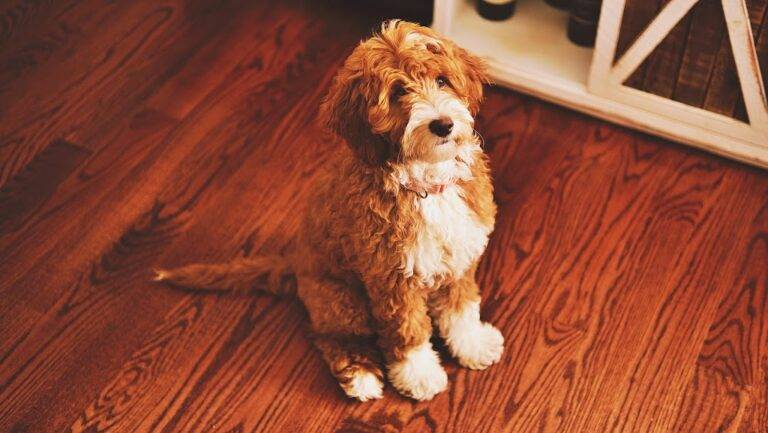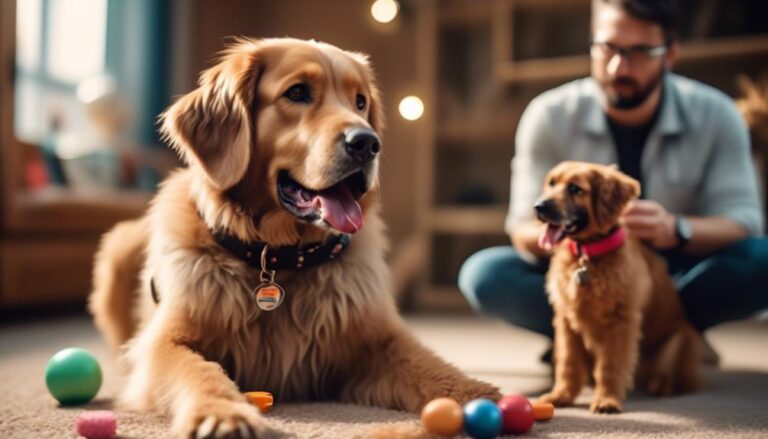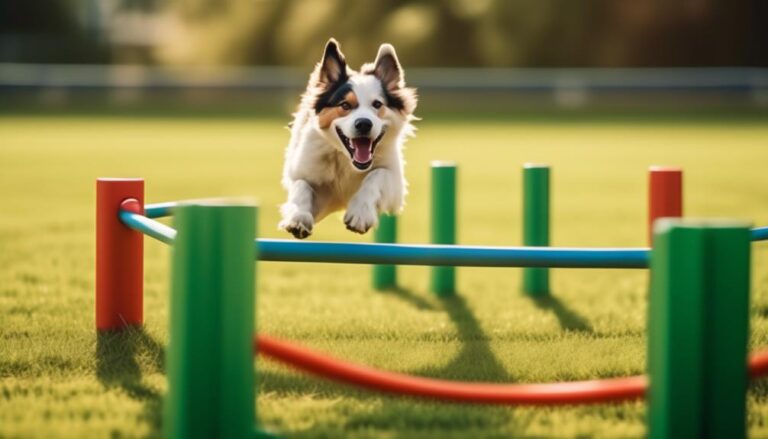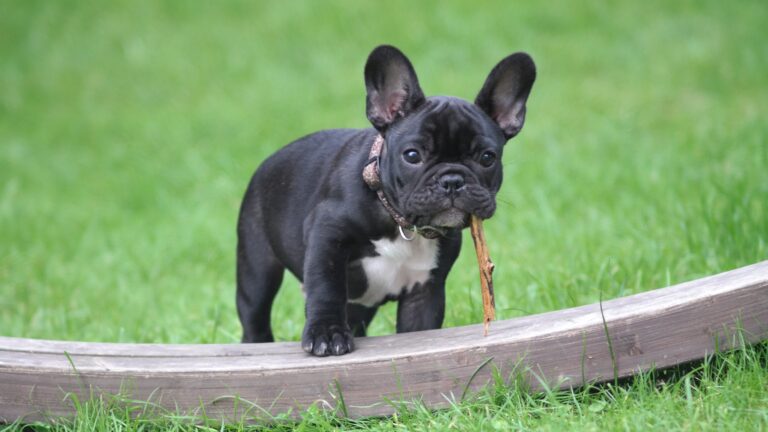Top Dog Training Tips for a Well-Behaved and Happy Pet
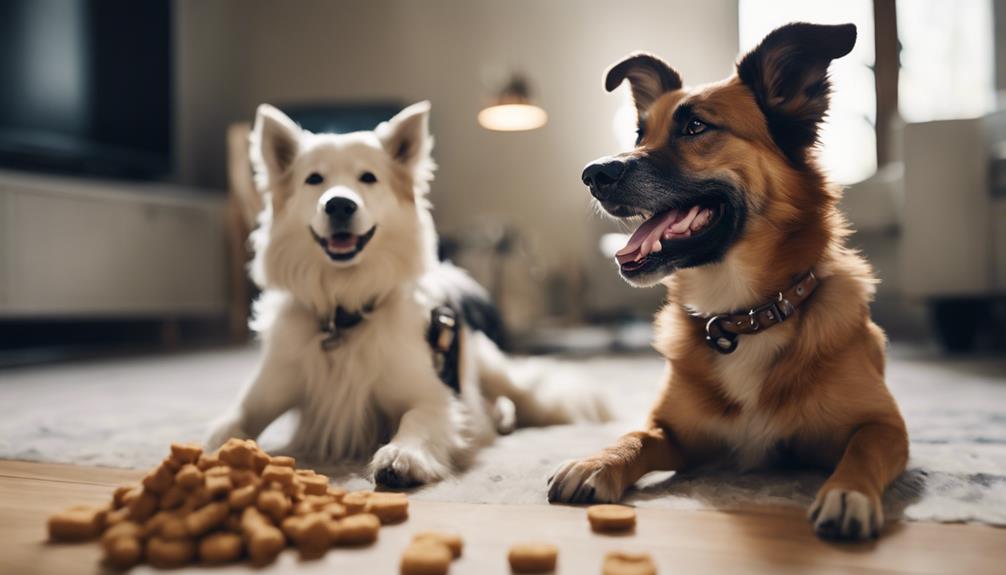
Top Dog Training Tips for a Well-Behaved and Happy Pet: When it comes to training your furry friend, the balance between discipline and affection is crucial. You may find yourself wondering how to navigate through the maze of conflicting advice and techniques. Rest assured, by incorporating a few fundamental strategies, you can set the groundwork for a harmonious relationship with your pet. By focusing on consistency and positive reinforcement, you’ll be well on your way to fostering good behavior and a happy, well-adjusted dog. But what about those challenging moments that leave you scratching your head? How To Train Your Dog
Basic Commands
Mastering basic commands is essential for effective communication with your dog. Clicker training can be a powerful tool to help your furry friend learn these commands quickly and effectively. By using a clicker paired with treats, you can mark the exact moment your dog performs the desired behavior, making it easier for them to understand what you are asking for. This method is especially useful for teaching new commands or refining existing ones.
Verbal cues play a crucial role in communicating with your dog. Consistency is key when using verbal cues during training sessions. Choose simple, clear words for commands such as “sit,” “stay,” or “come.” Make sure to use the same cue each time you ask your dog to perform a specific action. This will help them associate the word with the behavior you are requesting. Remember to use a positive and upbeat tone when giving verbal cues to keep your dog engaged and motivated.
When incorporating clicker training and verbal cues into your dog’s training routine, be patient and consistent. Practice each command in short sessions multiple times a day. Celebrate small victories and always end on a positive note. With dedication and the right techniques, you will soon see progress in your dog’s ability to follow basic commands effectively.
Positive Reinforcement
When training your dog, remember the power of positive reinforcement. Rewards for good behavior, encouragement for learning, and consistent praise and treats are essential tools in shaping your furry friend’s behavior. By using positive reinforcement techniques, you can create a strong bond with your dog while teaching them new commands effectively.
Rewards for Good Behavior
Encouraging good behavior through positive reinforcement is a key aspect of effective dog training. Clicker training methods and treatment alternatives are popular ways to reward your pet for their good behavior. Clicker training involves using a sound to mark the desired behavior, followed by a treat or reward. Treat alternatives like praise or a favorite toy can also be effective in reinforcing positive actions. Additionally, playtime rewards and training games can be enjoyable for your dog while still promoting good behavior. Incorporating these techniques into your training routine can help keep your pet engaged and motivated to learn. Remember, consistency and patience are essential when using rewards to encourage your furry friend’s good behavior.
Encouragement for Learning
To effectively encourage your dog’s learning through positive reinforcement, consistently use rewards that your pet finds motivating and enjoyable. Employ motivational training techniques that focus on building confidence in your furry companion. Positive reinforcement strategies, such as offering treats, verbal praise, or playtime, can go a long way in encouraging progress during training sessions. When your dog successfully follows a command or exhibits good behavior, promptly reward them to reinforce the desired actions. By using positive reinforcement consistently, you create a supportive environment that motivates your pet to learn and engage with training activities. Remember, celebrating small victories and acknowledging your dog’s efforts will strengthen the bond between you and your loyal friend.
Consistent Praise and Treats
As you continue fostering your dog’s learning journey, remember that consistent praise and treats play a crucial role in reinforcing positive behaviors. Consistent reinforcement is key to helping your pet understand what behaviors are desirable. Treat training can be a powerful tool in shaping your dog’s behavior by associating positive actions with rewards. Here are some essential points to keep in mind:
- Consistency is Key: Ensure that you praise and reward your dog every time they exhibit the desired behavior.
- Timing Matters: Instantly reward your dog after they perform the desired action to strengthen the association.
- Varied Rewards: Use a variety of treats to keep your dog motivated and interested in the training process.
Consistent Routine
Establishing a consistent routine is pivotal in successfully training your dog. By setting clear boundaries and providing daily structure, you create a predictable environment that helps your furry friend understand what is expected of them. Dogs thrive on routine as it gives them a sense of security and helps them learn faster.
Start by establishing a daily schedule for feeding, walks, playtime, and training sessions. Consistency in these activities will help your dog anticipate what comes next and reduce any anxiety they may have. Make sure to stick to the same feeding times and locations, as well as regular potty breaks to reinforce good habits.
Incorporate training sessions into your daily routine to work on commands and behaviors. Consistency in training methods and expectations is key to helping your dog understand what you want from them. Use positive reinforcement to reward good behavior and redirect or ignore unwanted behavior to establish boundaries effectively.
Additionally, ensure your dog gets enough exercise and mental stimulation throughout the day. A tired dog is a well-behaved dog, so make time for walks, playtime, and interactive toys to keep them engaged and happy. Remember, a consistent routine not only helps in training your dog but also strengthens the bond between you and your furry companion.
Socialization Skills
When training your dog, early puppy socialization is crucial for their development. Encouraging positive interactions with strangers helps build their confidence and social skills. Introducing them to new environments broadens their comfort zone and adaptability.
Early Puppy Socialization
To properly socialize your puppy early on, focus on introducing them to a variety of people, animals, and environments in a positive and controlled manner. It’s crucial for their development and overall behavior. Here are some key points to consider:
- Playdate etiquette: Encourage supervised play with other puppies to help your dog learn social cues.
- Puppy kindergarten: Enroll your pup in a puppy kindergarten class to expose them to different dogs and people in a safe setting.
- Explore new environments: Take your puppy to different places like parks, streets, and even pet-friendly stores to get them accustomed to various sights, sounds, and smells.
Positive Interactions With Strangers
Developing positive socialization skills with strangers is crucial for your dog’s overall well-being and behavior. Teaching your furry friend proper greeting etiquette is essential in ensuring safe and pleasant interactions with new people. Encourage your dog to approach strangers calmly and politely, without jumping or barking excessively. When introducing your dog to new individuals, monitor their body language to ensure they are comfortable and relaxed. Positive reinforcement techniques, such as treats and praise, can help your dog associate stranger interactions with positive experiences. Remember to always supervise these encounters to prevent any negative incidents. By fostering good socialization skills with strangers, you are helping your dog become a well-adjusted and friendly companion in various social settings.
Exposure to New Environments
Properly exposing your dog to new environments is essential for enhancing their socialization skills and overall well-being. When introducing your furry friend to novel experiences, remember to take it slow and provide positive reinforcement. Here are some key points to consider:
- Outdoor exploration: Take your dog to different outdoor locations like parks, beaches, or hiking trails to help them acclimate to varying surroundings.
- Novel experiences: Introduce your pet to new stimuli such as different sounds, sights, and smells to broaden their socialization skills.
- Positive reinforcement: Reward your dog with treats, praise, or playtime when they exhibit calm and confident behavior in unfamiliar environments.
Understanding Body Language
Understanding a dog’s body language is crucial for effective communication and training. Canine communication is largely non-verbal, making it essential for pet owners to grasp the subtleties of their furry friend’s signals. By recognizing these cues, you can better understand your dog’s emotions, needs, and responses.
Ears play a significant role in conveying a dog’s mood. When your dog’s ears are perked up and facing forward, they are likely alert and engaged. Conversely, flattened ears could indicate fear or submission. Observing the position of the tail is also key. A wagging tail doesn’t always mean a happy dog; it can signal excitement, nervousness, or even aggression depending on the wag’s speed and height.
Additionally, a dog’s body posture speaks volumes. A relaxed and loose stance generally signifies comfort and contentment. On the other hand, stiffness or raised hackles may indicate discomfort, fear, or defensiveness. Eye contact is another essential cue to consider. Direct eye contact can be perceived as confrontational, especially in dogs not familiar with the person.
Patience and Persistence
When it comes to training your dog, remember that patience and persistence are key. Consistency in your training methods will help your furry friend understand what is expected of them. Using positive reinforcement techniques can also make the learning process more enjoyable for both you and your pet.
Consistent Training Methods
Wondering how to effectively instill good behavior in your dog through consistent training methods? Consistency is key to successful dog training. Here are some essential tips to help you stay on track:
- Clicker training: Utilize a clicker to mark desired behaviors instantly.
- Behavior modification: Understand the root causes of your dog’s behavior and tailor your training approach accordingly.
- Routine reinforcement: Establish a consistent training schedule to reinforce positive behaviors effectively.
Positive Reinforcement Techniques
To effectively reinforce positive behaviors in your dog, practice patience and persistence in your training approach. Utilize clicker training techniques and behavior modification to encourage desired actions. Clicker training involves associating the sound of a clicker with a treat, marking the exact moment your dog does the right behavior. This instant feedback helps your pet understand which actions lead to rewards. Target training, such as teaching your dog to touch a specific object with their nose, can be beneficial in shaping behaviors. By setting clear goals and consistently rewarding your dog’s good behavior, you can guide them towards becoming a well-behaved and happy companion. Remember, patience and persistence are key in building a strong foundation for positive reinforcement.
Reward-Based Training
Reward-Based Training relies on positive reinforcement to encourage desired behaviors in dogs. This training method focuses on rewarding good behavior rather than punishing unwanted actions, creating a positive learning environment for your furry companion.
Key Points to Remember:
- Clicker Training: Utilizing a clicker to mark the exact moment your dog performs the desired behavior can be highly effective in reinforcing positive actions.
- Behavior Modification: Through consistent rewards for good behavior, you can effectively modify your dog’s actions over time.
- Relationship Building: Reward-based training strengthens the bond between you and your dog, fostering trust and mutual understanding.
When implementing reward-based training, consistency is key. By rewarding your dog every time they exhibit the desired behavior, you are clearly communicating what you expect from them. This approach not only teaches your dog new commands but also helps in shaping their overall behavior.
Moreover, this training method promotes communication skills between you and your dog. By using positive reinforcement, you are effectively conveying to your pet what you consider to be good behavior, leading to a harmonious relationship built on trust and respect. Remember, patience and consistency are fundamental in reward-based training for a well-behaved and happy pet.
Potty Training Tips
When teaching your dog proper bathroom etiquette, consistency and patience are key factors in successful potty training. Potty training challenges are common, but with the right solutions, you can effectively teach your furry friend where to go. One of the most effective techniques is crate training.
Crate training offers numerous benefits for potty training. Dogs have a natural instinct to keep their sleeping area clean, making a crate a valuable tool in teaching them bladder control. By confining your dog to a crate when you can’t supervise, you can prevent accidents indoors. Remember, the crate should be a positive space, never used for punishment.
To tackle potty training challenges, establish a routine. Take your dog outside frequently, especially after meals and naps. When your dog goes potty outside, praise and reward them to reinforce good behavior. If accidents happen indoors, clean the area thoroughly to remove any lingering scent that might attract your dog back to the same spot.
Consistency is key in potty training. Set clear rules and stick to them. Be patient and understanding; accidents are part of the learning process. With crate training techniques and a consistent routine, your dog will learn proper bathroom etiquette in no time.
Mental Stimulation
For your furry friend’s overall well-being and development, mental stimulation plays a crucial role in maintaining their happiness and preventing boredom. Dogs, like humans, need mental exercise to stay sharp and content. Here are some effective ways to provide mental stimulation for your beloved pet:
- Interactive Toys: Interactive toys are a fantastic way to engage your dog’s mind and keep them entertained. These toys often dispense treats or require your dog to solve a puzzle to access a hidden reward, keeping them mentally active and preventing destructive behaviors that can stem from boredom.
- Puzzle Games: Puzzle games are a fun and challenging way to stimulate your dog’s brain. Whether it’s a toy that requires them to slide pieces to find a treat or a game where they have to figure out how to open compartments, puzzle games can provide hours of entertainment while also helping your dog develop problem-solving skills.
- Training Sessions: Training sessions are not only great for teaching your dog new skills but also for keeping their mind engaged. Regular training can help strengthen the bond between you and your pet, boost their confidence, and provide mental stimulation through learning and following commands.
Handling Aggression
To effectively address aggression in your dog, it is essential to understand the underlying causes and employ appropriate training techniques. Dealing with fear aggression requires patience and a gentle approach. Fear aggression can stem from past trauma or lack of socialization, leading a dog to react defensively when feeling threatened. It’s crucial to create a safe environment for your dog, gradually exposing them to situations that trigger fear, and rewarding calm behavior to build confidence.
Redirecting reactive behavior is another key aspect of handling aggression. When your dog displays reactive behavior, such as barking or lunging, it’s important to redirect their focus onto you through commands they have been trained to follow. By teaching your dog to focus on you in stressful situations, you can help them remain calm and prevent escalation. Additionally, providing mental stimulation through interactive toys or games can help alleviate pent-up energy and reduce the likelihood of reactive outbursts.
Leash Training Techniques
Utilize proper leash training techniques to establish clear communication and promote positive walking experiences with your dog. When it comes to leash training, consistency and patience are key. Here are some essential tips to help you master leash handling and encourage loose leash walking:
- Use the right equipment: Invest in a well-fitting harness or collar that is comfortable for your dog. Avoid retractable leashes for training as they can encourage pulling.
- Start small: Begin training in a quiet, familiar environment to minimize distractions. Gradually increase the level of difficulty as your dog becomes more comfortable with walking on a leash.
- Reward good behavior: Positive reinforcement is crucial. Whenever your dog walks politely on a loose leash, reward them with treats, praise, or toys to reinforce the desired behavior.
Crate Training Benefits
Wondering what benefits crate training can offer your furry companion? Crate training advantages are numerous and can contribute to a well-behaved and content pet. One of the key benefits of crate training is providing your dog with a safe and secure space that becomes their den, a place they can retreat to when feeling stressed or tired. This helps in reducing anxiety and establishing a sense of comfort for your pet. Additionally, crate training can aid in housebreaking by utilizing your dog’s natural instinct to avoid soiling their living area, teaching them to hold their bladder until they are taken outside.
Crate training tips are essential to ensure the process is effective and positive for both you and your dog. Start by introducing the crate gradually, making it a pleasant environment with comfortable bedding and enticing toys. Avoid using the crate as a form of punishment to maintain a positive association. Keep training sessions short and rewarding, gradually increasing the time your dog spends in the crate. It’s crucial to never force your dog into the crate and always make it a voluntary and enjoyable experience.
Incorporating crate training into your routine can lead to a well-adjusted and obedient pet while providing them with a sense of security and comfort. Remember to be patient and consistent with the training process to achieve the best results for your furry friend.
Obedience Training Essentials
Crate training lays a solid foundation for obedience training essentials by instilling discipline and creating a structured routine for your dog. This training method helps your pet understand boundaries and aids in managing their behavior effectively. To further enhance your dog’s obedience training, consider the following essential tips:
- Clicker Training Techniques: Clicker training is a positive reinforcement method where a distinct sound (the click) is used to mark the desired behavior instantly. This technique helps in communicating with your dog clearly and reinforces good behavior effectively.
- Advanced Obedience: Once your dog has grasped basic commands, consider advancing to more complex obedience training tasks. This can include off-leash training, mastering challenging commands, and improving response times.
- Behavior Modification, Advanced Training Techniques: If your dog exhibits specific behavioral issues, such as aggression or excessive barking, advanced training techniques focusing on behavior modification can be beneficial. Consult with a professional trainer to address these issues effectively.
Top Dog Training Tips for a Well-Behaved and Happy Pet Frequently Asked Questions
How Can I Help My Dog Overcome Separation Anxiety?
To help your dog overcome separation anxiety, try gradual departures, desensitization, and training techniques like positive reinforcement. Engage in bonding activities, provide mental stimulation, and create a safe space with comforting items.
What Are Some Tips for Managing a Dog’s Fear of Loud Noises?
To help your dog cope with loud noises like thunderstorms, consider desensitization training. Gradually expose them to recorded sounds at low volume, using positive reinforcement. Calming techniques such as creating a safe, cozy space can also aid in reducing noise phobia.
How Do I Address Resource Guarding Behavior in My Dog?
When addressing your dog’s resource guarding, focus on positive reinforcement training techniques for food aggression and behavior modification for toy possessiveness. Consistent training, rewarding good behavior, and seeking professional help can help manage and improve this behavior.
What Are Some Strategies for Preventing Counter Surfing and Other Unwanted Behaviors in the Home?
To prevent unwanted behaviors like counter surfing, focus on kitchen safety. Use positive reinforcement to redirect your dog’s attention to appropriate activities. Consistent training, rewarding good behavior, and managing the environment will help create a well-behaved pet.
How Can I Teach My Dog to Walk Nicely on a Leash Without Pulling?
To teach your dog to walk nicely on a leash without pulling, try using positive reinforcement methods. Start with short training sessions, reward good behavior, and use leash training techniques like stopping when they pull. Consistency is key to success.
Conclusion
In conclusion, incorporating these top dog training tips into your routine will help create a well-behaved and happy pet. Remember to be patient, consistent, and positive in your training approach. By practicing basic commands, using positive reinforcement, and understanding your pet’s needs, you can build a strong bond and a harmonious relationship with your furry friend. With dedication and love, you can help your pet become the best version of themselves.



